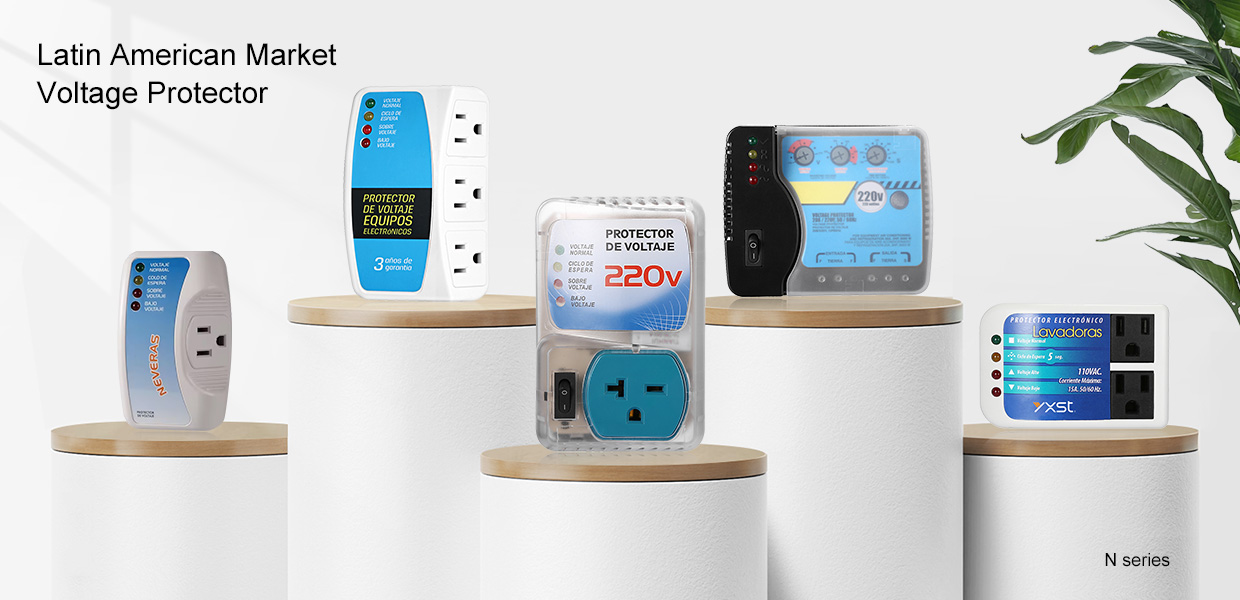Surge Protection Devices (SPD) and Automatic Voltage Protectors (AVP) serve different roles in safeguarding electrical equipment.
Surge Protection Devices (SPD) guard against sudden spikes in voltage, such as those from lightning or power surges, by diverting excess voltage away from equipment. Automatic voltage protectors (AVP), on the other hand, monitor the voltage levels continuously and disconnect the load if the voltage is too high or too low, protecting against prolonged over-voltage or under-voltage conditions.
| Comparison Items | Surge Protection Device (SPD) | Automatic Voltage Protector (AVP) |
| Purpose | SPDs are designed to protect electrical devices from voltage spikes or surges caused by lightning strikes, power outages, or other sudden changes in electrical current. | AVP is designed to monitor voltage levels in an electrical supply and disconnect the power supply if the voltage exceeds or falls below preset limits, protecting equipment from overvoltage or undervoltage conditions. |
| Functionality | When a surge occurs, the SPD diverts excess voltage from sensitive equipment, typically through grounding. SPDs can react very quickly (within nanoseconds) to protect devices, limiting the voltage reaching downstream equipment. | The AVP constantly monitors the incoming voltage and automatically disconnects the electrical load in case of abnormal voltage conditions. It can reconnect once the voltage returns to safe levels. |
| Installation Location | SPDs can be installed at various locations, such as the main electrical panel, sub-panels, or equipment level (point-of-use).
Response to Voltage Fluctuations: SPDs do not regulate voltage levels; they only divert surges when they occur. | AVPs are typically installed at the main service panel or close to the equipment they are intended to protect. |

Key Features of an Automatic Voltage Protector (AVP)
Voltage Monitoring:
An AVP continuously monitors the incoming voltage from the power supply. It checks for any deviations from preset voltage levels which could be harmful to connected equipment.
Automatic Disconnection:
When the voltage exceeds a predetermined limit (overvoltage) or drops below a certain threshold (undervoltage), the AVP automatically disconnects the power supply to the connected devices. This helps prevent damage that could be caused by voltage anomalies.
Automatic Reconnection:
After disconnecting the load, the AVP usually has a built-in time delay before it checks the voltage level again. If the voltage returns to within acceptable limits during this delay, the AVP will automatically reconnect the power supply, restoring operation.
Settings and Configuration:
AVPs can have adjustable settings based on the specific needs of the equipment being protected. Users can set the voltage thresholds for when the device should disconnect and reconnect, enhancing the flexibility of the protection.
Display and Indicators:
Many AVP units come with indicators or displays that show the current voltage level, operational status, and whether the device is in a protective mode.

Summary
SPDs are primarily for protecting against voltage surges and spikes and do not regulate ongoing voltage levels.
AVP, on the other hand, focus on monitoring and controlling voltage levels and disconnecting power in case of voltage irregularities to prevent damage to equipment.
Both devices are essential in an electrical protection scheme, particularly in environments with sensitive electronic equipment, but they fulfill different protection roles.




